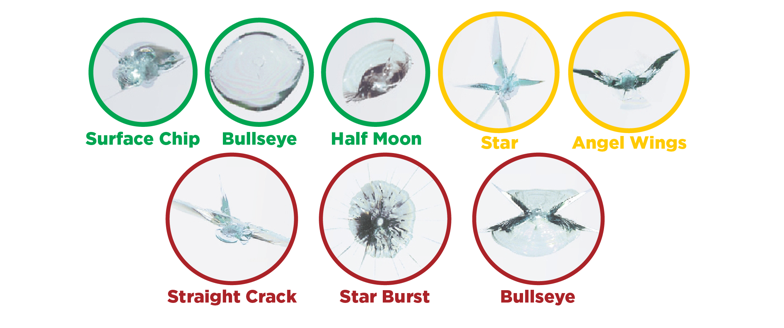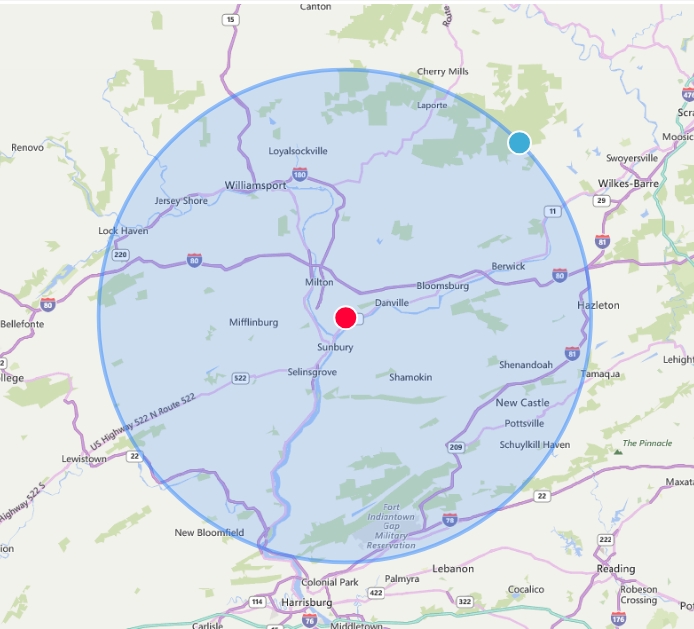Types of Windshield Damage:

Chips
Your front windshield is made of laminate glass that is designed not to shatter into sharp pieces, ensuring your safety. Chips occur when small rocks or debris hit the glass, flaking off tiny pieces without shattering it. They typically affect the outer layer of the front windshield. There are several types of chips:
- Chip (Pit): A small piece of glass is missing, creating a pit where the glass is absent.
- Bulls-eye: A larger, dark-colored, circular damage with an impact hole.
- Half Moon (Partial Bulls-eye): Similar to a bulls-eye but not completely circular.
- Combination Break: Involves multiple types of damage, such as a chip with radiating cracks.
CRACKS
Cracks can form on any car glass but are most common on the front windshield. They result from sudden temperature or pressure changes, excess sunlight, or chips spreading. Cracks can occur in the inner or outer layers of the windshield and include:
- Edge Crack: Starts within two inches of the windshield’s edge or reaches the edge.
- Floater Crack: Starts in the middle of the windshield, away from the edges.
- Stress Crack: Caused by large or sudden temperature variations.
- Crack Chip: A small crack that can be covered by a quarter.
- Long Crack: Longer than a crack chip, exceeding six inches.
- Star Break: A series of cracks radiating from one chip, resembling a star.
How to Avoid Chips and Cracks
While not all chips and cracks are avoidable, you can reduce the risk by following these tips:
to Avoid Chips:
- Drive Carefully on Gravel Roads: Drive slowly to reduce the risk of kicking up rocks.
- Leave Space Between Vehicles: This reduces the likelihood of debris hitting your windshield.
- Avoid Following Dump Trucks: Steer clear of vehicles hauling trash or debris.
- Park Indoors or Use a Car Cover: Protect your vehicle from rocks, hail, and other hazards.
to Avoid CRACKS:
- Avoid Temperature Extremes: Gradually turn up your defroster to melt ice and snow.
- Check for Chips Regularly: Fix chips immediately to prevent them from turning into cracks.
Can the Damage Be Repaired?
Whether your windshield damage can be repaired depends on several factors:
- The damage is roughly the size of a quarter or smaller.
- Your windshield has fewer than three chips.
- The crack does not reach the edge of your windshield.
If the damage is extensive such as; multiple chips, large chips, or edge-reaching cracks, the windshield will need to be replaced. Fixing chips promptly is crucial to prevent them from causing larger cracks and compromising your car’s structural integrity.




